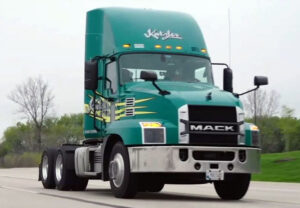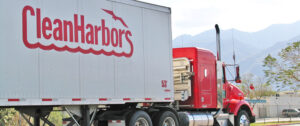There’s no doubt about it: The cost of trucking is on the rise.
While increasing prices are pretty much par for the course, recent cost increases have exceeded those recorded in previous years.
The American Transportation Research Institute (ATRI) reports that the average cost of operating a truck in 2022 was $2.251 per mile. That was the first time this average crossed the $2 mark since the organization began tracking data in 2008. Year over year, operating costs in 2022 increased 21.3% over 2021.
Why? The reasons are many: Freight rates have fallen. Fuel costs have spiked. The cost of maintenance and repair on trucks has risen. In addition, driver wages are on the increase — which is not a bad thing in itself.
Like ATRI, the Truckload Carriers Association (TCA) also tracks costs; however, TCA does so on a more frequent basis through its Profitability Program (TPP). The program is designed to share vital information with member carriers on a timely basis so companies can compare in-house results with how the rest of the industry is performing. These comparisons allow carriers to set benchmarks — standards against which companies’ performance is measured.
Carriers tend to keep an eye on the successes of the top performers and learn what changes can be made in operations to move themselves into the “Best in Class” competition.
As noted by Dave Broering, president of NFI Integrated Logistics, “In a softening market, with costs rising at an unparalleled pace, carrier benchmarking becomes more critical than ever.”
In a February TCA webinar, “The Benefits of TCA’s Profitability Program and Benchmarking,” Jack Porter, TCA’s Profitability Program managing director, provided some insight into the association’s program, current trends, and suggestions for cost containment.
The foundation of the TPP is for carriers to seek continuous improvement, set benchmarks for comparison, challenge business comfort zones, and navigate trucking cycles and challenges.
Carriers that participate in the program share a primary component that is vital to improving a company’s profitability — a set of stated core values. Those core values go beyond simply making a profit; they set strategies and develop action items that stimulate progress. In addition, company management is dedicated to consistency. Everyone in these companies is aware of the core values, and management decisions can be clearly tied back to one or more values.
Among the top data sources the TPP looks to is the Cass Freight Index. This index, updated monthly, shows deviation within the trucking business and is a gauge of supply and demand. Looking at the index over the past few years, trends indicate the trucking industry is returning to a historical level in terms of supply and demand. The COVID-19 pandemic created wide swings in the Cass Index, but since mid-2022, indicators have begun to drop.
According to TCA’s Porter, the Cass index is all about capacity, and capacity reflects demand.
In terms of the number of carriers in operation, the figure has been consistent. But COVID changed that. Many small (1-5 truck) carriers entered the market to handle spot demand, and carrier population skyrocketed. Of late, many of those small carriers have left the market, and the number is slowly coming down.
During TCA’s webinar, Porter pointed out several market trends that are currently impacting the trucking industry:
- Rates are flat.
- Fleet capacity/brokerage is waning.
- Truck orders are stable.
- Equipment-associated costs are rising.
- Productivity is lagging, as figures such as miles per truck and gross margin per employee fall.
Fortunately, signs indicate the industry is leaving a period of oversupply of truck capacity and entering one of balanced recovery.
For carriers to remain competitive in a period of balanced recovery, Porter says they must adhere to several priorities:
- Maintain high-quality customer service.
- Know their networks — understand where their customers, drivers, and equipment are in the marketplace.
- Keep trailers full.
- Watch capacity fallout as small carriers leave the market.
- Monitor equipment costs.
Likewise, in terms of business operations, carriers must be prepared to revamp customer service and sales departments, prepare their businesses for an upcoming recovery, enhance the workforce, align their networks, and reduce expenses.
To help TCA member carriers not only survive, but also thrive, the TPP tracks over 400 industry benchmarks, allowing companies to compare performance against the standard in hundreds of ways. Currently, trends in some of the primary benchmark categories indicate the trucking industry is in the midst of change.
In terms of operating ratio (a measurement of how well a company can pay off its liabilities with current cash flow), Porter said, “The best (carriers) are still doing pretty damn good. The rest have had a really tough couple of years,” adding that those who have followed the principles of the profitability program have likely “weathered the storm and are pretty well off for a rebound.”
As far as revenue per truck is concerned, the current average is $3,800 to $4,900 per month, a reflection of demand and the subdued freight rates. Driver wages as a percentage of revenue are in the 19% to 28% range, although in several sectors the figure exceeds 30%. This benchmark hovered at 25% before the COVID-19 pandemic. Independent contractors rank lowest when considering income.
Gross profit as a percentage of revenue is currently in the 12% range. The goal is typically 25%, and the current profit margin is far below the benchmark. Three years ago, profit averaged 20% to 25% but has yet to rebound.
According to Porter, the benchmark for gross profit is the greatest challenge the industry currently faces. Likewise, gross profit per employee has experienced a decline. In 2021 and 2022, it hovered around $1,000. Today, the average is $700-$800. Finally, administrative expenses as a percentage of revenue are averaging 30%, although 50% is typical in some sectors.
Porter notes that it’s vital that carriers compare themselves with benchmarks frequently — perhaps even on a weekly basis. Operating costs can change quickly, and variable cost factors are fluid. Successful carriers, he said, identify and stick to three primary objectives and ensure these objectives guide management decisions:
- Identify action items on an ongoing basis.
- Share results.
- Reward success.
Benchmarking is something any industry should adopt as a primary practice, and the TPP is an example of a well-developed industry benchmarking system that carriers are invited to join. It allows carriers to evaluate the efficiency of previous performance, learn what is possible, identify success factors, and determine how a company compares to its peers.
To find out more about the program, click here.
This article originally appeared in the May/June 2024 edition of Truckload Authority, the official publication of the Truckload Carriers Association.
Since retiring from a career as an outdoor recreation professional from the State of Arkansas, Kris Rutherford has worked as a freelance writer and, with his wife, owns and publishes a small Northeast Texas newspaper, The Roxton Progress. Kris has worked as a ghostwriter and editor and has authored seven books of his own. He became interested in the trucking industry as a child in the 1970s when his family traveled the interstates twice a year between their home in Maine and their native Texas. He has been a classic country music enthusiast since the age of nine when he developed a special interest in trucking songs.






